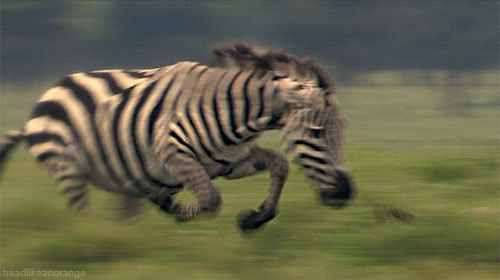 |
| NIGHTY! |
Thursday, May 3, 2012
Monday, April 30, 2012
Sunday, April 29, 2012
Bat Conservation International
Bat Conservation International is conducting and supporting science-based conservation efforts around the world. Working with many partners and colleagues, these innovative programs combine research, education and direct conservation to ensure bats will be helping to maintain healthy environments and human economies far into the future.
Dumb Gulper Shark Threatened
The Dumb Gulper Shark (Centrophorus harrissoni) is a rare and critically endangered deep water dogfish. It is found only along the east coast of Australia and isolated spots north and west of New Zealand. The population is unknown but numbers have decreased as much as 99% in some areas since the 1970s. Action is being taken to preserve this type of shark, which includes being incorporated into the
Environmental Protection and Biodiversity Conservation (EPBC).
Sharks in Red list
Extremely high risk of extinction:
10 Shark Species
- Pondicherry Shark
- Dumb Gulper Shark
- Ganges Shark
- Bizant River Shark
- New Guinea River Shark
- Daggernose Shark
- Striped Dogfish
- Sawback Angelfish
- Smothback Angel Shark
- Angel Shark
Endangered (very high risk of extinction):
9 Shark Species
- Borneo Shark
- Speartooth Shark
- Whittefin TopeShark
- Narrownose Smoothhound
- Great Hammerhead
- Argentine angle Shark
- Hidden AngelShark
- Smoothback Angel Shark
- Angular AngelShark
Giant Panda
Its scientific name is Ailuropoda melanoleuca. It is found in
Southwest China, to the east of the Tibetan plateau. There's
less than 1,600 in the wild. The giant panda is the rarest
member of bear family among the world's most threatened
animals. Its forest habitat, in mountains areas of
southwest China, is increasingly being populated by roads
and railroads.
Saturday, April 28, 2012
World Wild Life Organization
About WWF:
For 50 years,WWF has been protecting the future of nature. the worlds leading conservation organization, WWF works in 100 countries and is supported by 1.2 million members in the United States and close to 5 million globally. WWF's unique way of working combines global reach with a foundation in science, involves action at every level from local to global, and ensures the delivery of innovative solutions that meet the needs of both people and nature.
Vision:
WWF's vision is to build a future in which people live in harmony with nature.
Mission:
WWF's mission is to conserve nature and reduce the most pressing threats to the diversity of life on Earth.
Goal and Strategies:
By 2020, WWF will conserve 15 of the worlds most ecologically important regions by working in partnership with others to:
- Protect and restore species and their habitats
- Strengthen local communities ability to conserve the natural resources they depend upon
- Transform markets and politicizes to reduce the impact of the Production and consumption of commodities
- Ensure that the value of nature is reflected in decisions made by individuals, communities, governments and businesses.
- Mobilize hundreds of millions of people to support conservation
10 Animals facing extinction
 |
| Celebes Crested Macaque
This black macaque is found only in northwestern parts
of Indonesia, mostly on the island of Sulawesi.
It is often hunted as a pest.
|
 |
| Lowland Gorilla
Found in central Africa, the lowland gorilla has been all but
wiped out in recent years thanks to widespread hunting.
|
 |
| Black Rhino
The population of the black rhino declined by 90% over
the six decades. Now there's over 4,000.
|
 |
| Iberian Lynx
Believed to be the most Endangered Mammal in Europe.The Lynx found
mostly in Spain has fewer than 150 individuals in the wild. Its
dying out because its main source of food. (rabbit)
|
 |
| Baiji Dolphin
Also known as the Yangtze Dolphin and found in the China.
The baiji is the most endangered cetacean in the world. It may
already be Extinct.
|
 |
| Mindoro Dwark Water Buffalo
Found on the Philippine island of MIndoro. The Dwart water buffalo
was once widespread, but now is found in less than 300 sp. km.
|
 |
| Siberian Crane
This beautiful bird breeds in arctic Russia and Western Siberia,
but thanks to severe wetland loss, it is declining very fast.
|
How to prevent Animal Extinction!
Their is many things you can do to prevent an animal from getting extinct. Their excessive hunting, and destroying the animals sanctuaries are causes of animal extinction. The media is the greatest power we have to spread the word around the world.
Some pointers that may help you help animals in extinction:
- Start gathering money to give to rain forest, shelters and even zoos.
- Recycling will help ocean animals to don't get stuck in such thing as plastic.
- Organize public protest outside governments officials and other organizations that cut down sanctuaries of rain forest animals. Make sure your protest is peaceful.
- Volunteer with wildlife foundations to help.
- Being more organic will conserve resources in our environment.
Reasons for animal extinction!
Reasons for animal extinction is us humans. We are killing them for fun, their skin and their meat. This is part of life, but killing them for fun and fur is not. I don't think that's right. They are creatures and have the right to live too just like us.
Some factors that lead to animal extinction:
- Human hunting
- Cutting rain forest
- Global warming
- Starvation
- New predators
- New diseases
If we start to take care of our rain forest and our endangered animals we can safe them and have them for a longer period of time. So please help them be safe.
Subscribe to:
Posts (Atom)















